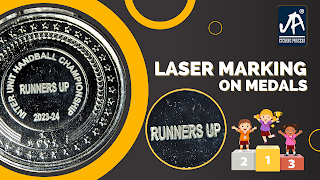Ensuring Safety: Advancements in Food-Grade Roller Coatings
Introduction
In the realm of food processing and packaging, the
significance of safety and hygiene cannot be overstated. One of the key components
ensuring these aspects are the rollers used in various stages of food
production. Recent advancements in food-grade roller coatings have been
game-changers, enhancing both the safety and efficiency of these processes.
This article explores the latest developments in roller coatings, focusing on
PTFE non-stick coating, sandblasting, and the etching process, and how they are
shaping the future of food safety.
PTFE Non-Stick Coating:
A Revolution in Food Safety
One of the most remarkable advancements in roller coatings
is the integration of PTFE (Polytetrafluoroethylene) non-stick coatings. PTFE,
known for its exceptional non-stick properties, offers an ideal solution for
food processing rollers. This coating ensures that food items do not adhere to
the rollers, thereby significantly reducing the risk of contamination and
simplifying cleaning processes. The non-stick nature of PTFE coatings also
means less use of oils or release agents, contributing to healthier food
production practices. Moreover, PTFE's resistance to high temperatures and
chemicals makes it a durable choice, standing up to the harsh conditions often
found in food processing environments.
Sandblasting: Enhancing
Adhesion and Cleanliness
Sandblasting
is another technique that has proved beneficial in preparing roller surfaces
for coating. This process involves blasting the roller surface with abrasive
material to create a rough texture. The primary purpose of sandblasting in the
context of food-grade roller coatings is to enhance the adhesion of coatings
like PTFE. A well-prepared surface ensures that the coating bonds effectively,
thereby extending the lifespan of the roller and maintaining its hygiene
standards. Additionally, sandblasting removes all previous residues and
contaminants from the roller surface, ensuring a clean and safe starting point
for the application of the new coating.
Etching Process:
Precision and Uniformity in Coating Application
The etching
process is a crucial step in achieving a uniform and precise coating on
food-grade rollers. This process typically involves using acidic or basic
solutions to create micro-etchings on the roller surface. These etchings
enhance the surface area, allowing for a more uniform application of coatings
like PTFE. The result is a consistent layer that not only contributes to the
non-stick and hygienic properties of the roller but also ensures even heat
distribution during processing. The precision afforded by the etching process
is particularly important in applications where the slightest irregularity in
coating can lead to food safety concerns.
The Impact of These
Advancements
The integration of PTFE
non stick coating, sandblasting, and the etching process in food-grade
roller coatings has had a profound impact on the food industry. These
technologies have not only enhanced the safety and cleanliness of food
processing but have also improved the efficiency and longevity of the
equipment. With these advancements, food manufacturers can ensure a higher
standard of food safety, while also reducing operational costs and minimizing
environmental impact.
Conclusion
The advancements in food-grade roller coatings, particularly
through the use of PTFE non-stick coatings, sandblasting, and the etching
process, represent a significant step forward in food safety and efficiency.
These technologies reflect an understanding of the critical role that equipment
plays in maintaining the highest standards of hygiene and safety in the food
industry. As the industry continues to evolve, we can expect these coating
technologies to become even more sophisticated, further reinforcing the
commitment to producing safe, high-quality food for consumers worldwide.

.png)
Good, Looking to hire Canadian French translator freelancer? Find skilled professionals on Paperub. Connect with experts fluent in Canadian French for accurate translations, localization, and more. Start your project today on Paperub!
ReplyDelete